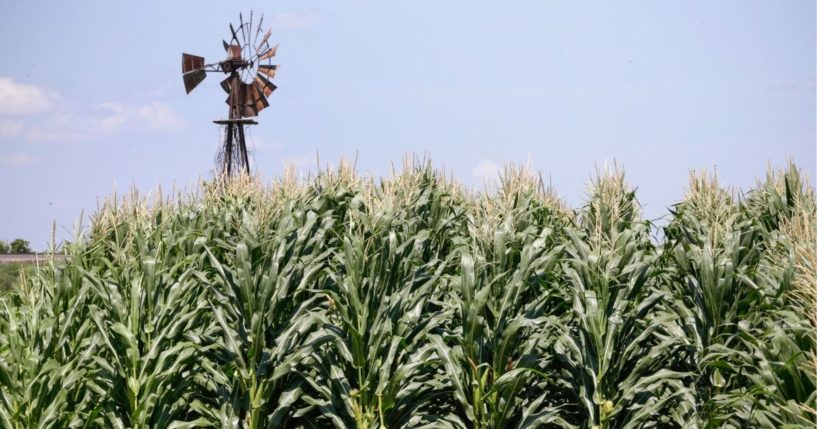
'Carbon Pipeline' to Cut Through Corn Belt Farmland; Eminent Domain on the Table for Landowners Who Won't Accept
A carbon dioxide pipeline project is being developed across several Midwestern states, including eastern Iowa, but it may have to be built using eminent domain
Navigator CO2 Ventures, based in Texas, is proposing a 1,300-mile line pipeline that takes carbon dioxide from fertilizer and ethanol plants.
Navigator would consider using eminent domain— if Iowa officials will allow it — if farmers do not agree to provide easements to let the line go across their lands, according to The Gazette , a newspaper in Cedar Rapids.
The way the project works is that the gas is pressurized and liquified and sent to a place in western Illinois. The plan calls for the carbon to be injected into rock formations, where, according to the theory behind the project, it calcifies and never gets into the air.
From the opinion page: These companies and their carbon capture pipelines are not public utilities. Therefore, they should not be able to forfeit the rights of our ag procedures through the enforcement of emanate domain.https://t.co/g5iwy6Ixll
— The Dickinson County News (@DickinsonCoNews) November 26, 2021
The theory remains unproven, and some are skeptical or concerned about the possible impacts of the pipeline on their land.
“All things considered, it seems like a bad idea,” said Marian Kuper, 68, who lives with her husband Keith near Ackley, Iowa.
The $3 billion project claims it will bury 15 million metric tons of carbon dioxide.
A similar project, developed by Summit Carbon Solutions, cuts through parts of western Iowa on its 2,000-mile route.
Woodbury County residents express concern about carbon dioxide pipeline https://t.co/ROkXqAI3AT
— RadioIowa (@RadioIowa) November 19, 2021
The idea is a money-maker, in theory, for ethanol plants that want lower carbon scores for their fuels to sell in states such as California and Oregon, with low-carbon fuel standards.
A federal tax credit would give out up to $50 a metric ton for permanently stored carbon.
The companies are pushing the idea as a way to benefit everybody.
“These projects have a unique touchpoint to the agricultural community,” Elizabeth Burns-Thompson, a Navigator vice president, told The Gazette.
Burns-Thompson said the idea “has the potential to help keep those (ethanol and fertilizer) plants vital not only for years to come, but decades to come.”
Iowa board agrees to keep secret names of landowners in path of proposed carbon capture pipeline https://t.co/Ki4HBPm0Lr
— Carmen Scaglione (@carm2158) November 26, 2021
Navigator’s pipeline would be buried at least 5 feet underground, Burns-Thompson said.
“The best way to minimize risk is to go a little bit deeper,” she said. “Then you minimize some of those risks of a line strike.”
State regulators everywhere the line goes, which includes Minnesota, South Dakota, Nebraska and Illinois, must sign off on the project.
The company hopes to start construction in 2023.
Truth and Accuracy
We are committed to truth and accuracy in all of our journalism. Read our editorial standards.
Advertise with The Western Journal and reach millions of highly engaged readers, while supporting our work. Advertise Today.












